UPDATED REVIEW – October 20, 2019 – Roland HP503, HP505, HP507, and LX15 Digital Pianos – Recommended – The Roland Corporation is a well known music products company which was founded in Japan in 1972 and produces hundreds of different types of digital music and pro audio products used by professionals, institutions, and families throughout the world. I have used Roland products professionally for many years and have enjoyed playing on their Roland digital pianos throughout my long music career. Although Roland is a big company in the world of music, their name is not a household word in the way that Yamaha, Kawai, or Casio is. Roland does not make traditional acoustic pianos or general consumer products like cameras, cell phones, watches, motorcycles, etc like Yamaha, Casio, and Kawai do, so the Roland name is not as well known to the average family. But when it comes to digital electronics for keyboards, digital pianos, guitar products, drums, etc, Roland does a great job producing cutting edge technology which has been used by professional musicians for decades. NEW UPDATE: Roland upgraded and replaced their HP503, HP505, & HP507 & LX15 with new improved models which are called HP504, HP506, & HP508 and LX15e. The all new key actions, piano sound dynamics, pedaling, and other aspects of these new models have been redesigned to offer even more piano playing realism. Go to the following link to read my review of these new models: Roland HP504, HP506, HP508 Review. However, this year in October 2019 Roland introduced their latest HP models along with new LX and GP models of home digital pianos. To read my review on these new models, please click on the following the following link: Roland HP, LX, & GP models for 2019-REVIEW
| HP505 polished ebony |
Continuing with the HP503, HP505, HP507 review: Roland produces a lower priced line of home digital pianos called the RP & F series which sells for under $2000 and a more advanced line of home digital pianos selling for over $2500 called the HP and LX series which are only sold in piano stores in the US and not on the internet. Roland also produces a series of digital Grand pianos called the RG & V pianos which are pretty amazing and beautifully designed and available at selected US piano stores. I am not as fond of Roland pianos under $2000 (mainly because of their basic ivory feel-G key action) but I do like the Roland HP & LX digital cabinet pianos in the over $2500 price range. The lowest priced HP503 comes in two colors which are the standard imitation brown rosewood and satin black and the HP505 & HP507 are available in three finishes including the brown rosewood, satin black the higher priced polished ebony cabinet. The polished ebony is priced at approximately $700 more discount selling price (depending on the local dealer) than the standard rosewood & satin black color. For the standard colors, the HP503 retails at $3499US with store discount price at approx $2799US, HP505 retails at $3999US – store discount price approx $3299US, and the HP507 retails at $5499US – store discount price approx $4499US. All HP pianos come with a large duet size padded bench which is a very nice size for one or two people and quite comfortable. All discount pricing is approximate (does not include state & local retail tax) and a piano store can charge more money than the approximate discount prices I quoted here depending on the store and the area you are in. Also, the Roland factory warranty is generous at 5 years parts and 2 years labor.
| LX15 polished ebony |
The LX15 is the compact upright contemporary cabinet version of the HP507 and comes in two
finishes; either the polished ebony or polished white which are both very attractive and definitely my favorite of all the models. The lid of this model also lifts up (which exposes a classy looking red felt interior) and allows the sound to come out of the top like a little baby grand and the key cover is a slow close fold fold down type Although the LX15 is the highest priced of all the Roland models ($7295US retail – store discount selling price approx $5999US), I really like it because the sound has even more presence when playing through this upright cabinet and the design makes you feel like you are playing a real acoustic piano.
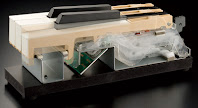 |
| PHAIII Advanced key action |
These Roland digital models have key actions and piano sound that is proprietary and unique to Roland and these pianos do not play or sound like any other major brand. Their key actions all have 3 key sensors (just like Yamaha & Kawai in higher price ranges) with nice piano and instrumental sound sampling technology for a wide dynamic range which is evident when playing, and I do enjoy that aspect of it very much. You can really express yourself on these instruments and feel like you are playing a real piano. The keys themselves are all plastic on all models whereas Yamaha & Kawai have wood keys on a few of their upper priced models. However, having all plastic keys is not a bad thing as long as they are good quality keys and properly graded weighted hammer style movement, which they are on the Roland pianos. In fact some of my favorite digital pianos these days do not have wood keys and I have a great playing experience with those models.
The Roland key action also incorporates a grand piano simulation movement with a “let-off/escapement mechanism” (left pic) which allows for greater note repetition and dynamics. This key movement
simulates the key action feel of a grand piano as opposed to an upright piano, and
of the major brands, only Roland & Kawai have this feature in digital pianos retailing under $8000. When you press the keys down slowly on a real grand piano, you can feel a slight hesitation or notch about half way down when the key action is moving and this is called the escapement or let-off effect. Generally speaking, upright acoustic pianos do not have this feature but grand pianos do. Is this let-off/escapement feature a necessity for playing a piano?…not really…but it’s cool to have because it does offer even better note/key repetition and playing accuracy, especially for more advanced players:) The piano key tops
are coated in a synthetic ivory material which duplicates the feel
of the older acoustic pianos which had real ivory keys. This substance
helps absorb sweat from the fingers and offers a smoother playing
experience. It also looks a bit classier than the all
white keys and I personally like the ivory key playing experience.
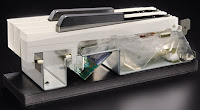 |
| Ivory-S standard key action |
Roland piano keys in general tend to move and play a bit faster/quicker than the other brands and this can be a good thing depending on the kind of music you play, your style of playing, and your needs. Roland produces three different key actions including the Ivory Feel-S action in the HP503 which is not as good as their top-of-the-line PHAIII Ivory Feel key action in the HP505, HP507, and LX15. Roland uses their less expensive Ivory Feel-G key action in their models under $2000 which I personally do not like (key action is a bit sluggish to push down,especially with playing flats & sharps) and I am glad is not used in the HP and LX models. The HP503 Ivory Feel-S keys are designed and manufactured differently than the other models and are using a one piece key as opposed to a 2-piece laminated key on the PHAIII advanced action. The 2-piece laminated key with metal support is a more durable sturdier key system and I do like it and would pick that over the HP503. The HP503 is still quite enjoyable to play in my opinion but the keys move differently than the better key action in the HP505,507, and LX15, and there is not quite as much control over the dynamics and sound in general in the HP503, at least for me. However, you can likely be happy on any of these Roland pianos with regard to key action…it just depends on your skill level and musical goals.
| HP507 Rosewood |
The acoustic piano sound itself on all the Roland pianos here are identical regardless of model and all models have 128-note polyphony piano memory. Roland calls its acoustic piano sound SuperNATURAL Piano meaning that Roland has attempted to reproduce a “natural” acoustic stereo sound in their digital pianos and I feel they have done this quite well. In fact, if you plug in a good pair of stereo headphones on any of these Roland piano models they would all basically sound the same to most people and have a great piano sound except that the higher price HP507 & LX15 have more key touch sensitivity settings as well as more digital sound enhancements including what Roland calls Piano Designer effects. There are certain tones that occur inside a regular piano when the hammers hit the strings and the strings are vibrating as well as how the pedals work. Some of those nuances (Duplex scale, hammer noise, damper noise settings) are included in the HP507 & LX15 which are not in the HP503 & HP505. Whether or not these features are something you will personally hear and notice one way or the other, is questionable, depending on your ears, expectations, musical experience, and sensitivity. All in all, I like the HP & LX SuperNATURAL piano sound very much although Kawai & Yamaha have very nice piano tone in their higher priced digital pianos too. It’s about apples & oranges…some people like one better than another because everyone has different ears and reacts to sound differently. I happen to really enjoy playing and listening to the Roland piano sound…especially in the models with upgraded internal speaker systems.
With regard to the piano pedals, they operate very smoothly and feel good to press down and incorporate the three traditional pedal functions (damper/sustain, sostenuto, and soft) of regular acoustic pianos. They do work better than other digital pianos I have played and simulate a good pedal experience using a half pedaling feature with longer sustain/decay time giving you more sustain/decay levels as well as physically feeling like the pedal is changing resistance when being pressed down. Roland calls this feature Progressive Damper Action. Having good piano pedals is important, especially to more advanced players so Roland does a good job in this way.
All of the models have identical or very similar digital functions including 128 note polyphony which seems to be more than enough note memory to handle more complex piano playing and layering of two instrument sounds. Roland’s proprietary technology seems to take care of any potential note drop-out that could otherwise occur when playing at advanced skill levels. Even though other major digital piano brands offer 256-note polyphony in their higher priced models, generally speaking, 128-note polyphony is more than adequate even when playing complex music, and I have never had an issue with it. The HP & LX models offer many instruments sounds divided into 5 control panel buttons above the keyboard. These sounds include 16 variations of acoustic pianos, 10 electric pianos, 14 string tones, and 307 additional instrument tones (just about anything you can think of including organs, banjo, synth, sax, trumpet, sitar, guitars, individual drum sounds, etc:) for a total of 347 tones which is a lot! You can see all of the instrument names and other function descriptions in the LCD user display screen which is very nice for displaying relevant
info. The HP507 & LX15 have slightly better display screens. You change the “tonality” of the pianos by increasing or decreasing the brilliance or mellowness of the piano & instrument sounds and you can take any two sounds and layer them together or split them separately on either side of the keyboard. The pianos also have the duet twin piano feature which lets you electronically divide the 88-keys into two identical 44-key keyboards playing the same notes in the same octaves so that two people can play the same music at the same time. It’s a great feature for teacher-student, parent-child, etc, and many of the top brands are including that feature in their pianos too.
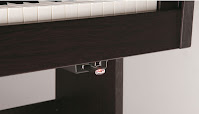 |
| USB ports |
A digital MIDI recorder is built into each model featuring 3 tracks of recording and playback (for up to 3 separate instruments) and being able to save the songs on a USB flashdrive which is very cool. There is also an audio wav file recorder which allows actual CD recording and playback giving a precise rendition of your song which you can then play along with or save on a USB flashdrive for loading onto your computer to use in notation programs or attach to emails to send to family & friends so they can hear you on their computers…lots of fun with that. You can also plug in another instrument or microphone into the pianos and record that sound along with the piano and combine them. You can also use a key transpose feature on the pianos to transpose your recording (including the external audio source) to another key for singing or modulating the song up or down in semi-tones one step at a time. Even playback speed of MIDI and audio song files can be adjusted up or down which is very cool for audio and most digital pianos cannot do this on audio wav/CD files. So that means you can play along with your favorite CD song direct in your piano and slow it down to 75% of original speed to learn how to play it at a better (slower) speed while learning…and it still sounds good! I have not seen audio/CD song tempo control before on any other brand that has audio record or playback.
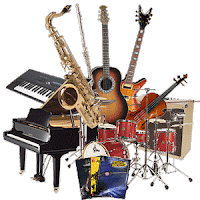 |
| General MIDI sound |
All Roland piano HP & LX models playback General MIDI song files from a USB flashdrive which is a great feature and one I use all the time in my studio. The General MIDI song format allows you to play your piano parts along “with the band or orchestra” and to interact with multiple instruments at one time using well known piano lesson books including thousands of popular songs which can be found on the Internet. For more info on the General MIDI format go here: General MIDI and Playing Piano. Roland has a number of other ways its pianos can record music and playback songs for music education & learning that are quite useful and can be important when trying to learn music whether you are a beginner or professional. But this comes as no surprise because for years Roland has built professional recording & music learning devices for musicians, teachers, and students who use them in their home or studio for more effective practice sessions. If you want to know more about this you are welcome to contact me.
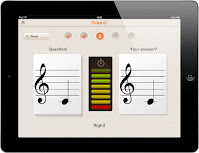 |
| Roland iPad App |
All of these models can connect directly to an iPad for another interactive way of learning about music and playing the piano and I use iPad piano learning/teaching apps in my studio and they are fun a provide a cutting edge visual way of interactive piano practice and learning. A unique feature of the Roland HP & LX pianos is that they
can wirelessly connect to an iPad using an optional Roland wireless USB
adapter while utilizing a special iPad Roland piano education app
for a good interactive ways of building piano skills. The wireless
connection also allows the iPad to serve as an instrument sound selector
for the piano instead of using the actual sound selector buttons on the
piano. This makes it easier and more intuitive to bring up the tones on
the piano from the iPad using the Roland iPad app assuming you have an
iPad in your home to use for that.
| HP507 control panel cover |
As far as the cabinets go, as I mentioned earlier they come in a few different colors depending on which model you get. The physical size of each cabinet is different and gets slightly larger as you go up in models. The HP507 and LX15 look most like real acoustic pianos because of their design and extra height but all models (except the LX15) have a design feature with a slide out key cover which is able to cover up just the control panel while you are playing as opposed to the entire keyboard. This allows the piano to look clean and uncluttered while playing it instead of having the control panel always showing. I like the way this works although for me I would seldom use this feature because I use the buttons and features on the control panel too often while I am playing and having the control panel covered over would just get in my way. But for those people who will simply be using one sound most of the time while playing, then it is a nice design touch to have.
| HP503 imitation Rosewood |
The speaker/audio system in each model also gets better as you go up in models with the LX15 being best of all. Each piano model has more audio power, bigger speakers, and more speakers than the model before it and the better internal speaker systems do make these pianos sound more realistic. The HP503 has 24 watts of total audio power going into 2 amplifiers and 2 speakers, the HP505 has 70 watts of total audio power going into 4 amplifiers and 4 speakers, the HP507 has 140 watts of total audio power going into 4 amplifiers and 6 speakers, and the LX15 has a slightly more powerful 160 watts of total audio power also going into 4 amplifiers and 6 speakers. The HP507 and LX15 are taller pianos so that the 6 speakers can be laid out inside the pianos with 2 near the top, two near the keyboard, and two below. This system gives a more balanced approach to recreating the acoustic piano playing experience and it really makes the piano sound like a big upright acoustic piano. So it’s not just the power or the internal audio systems themselves, but how and where they are installed in the piano and how the individual piano tones are projected through those different systems. Roland has been in the professional pro audio business for many years so they do have experience in this area and it shows in these digital pianos.
| LX15 ebony with closed cover |
Overall, I really like these Roland pianos and recommend them because they have a simple, fairly easy to use control panel right in front of you (instead of off to the side), the key action is enjoyable to play and moves well, the piano sound is very good and has a wide dynamic range which is sensitive to key pressure in a smooth way, as well as many of the other instrument sounds, the cabinet designs and colors are attractive for most people (satin & polished black are my favorite) and the features including recording, playback, etc, are fun and useful. The HP507 and LX15 are virtually the same pianos except for cabinet design and colors offered and if I was not held down by a budget, my favorite model would be the LX15…I do like the way it looks and has the tallest height out of all the major brands in its class. However in keeping with a lower budget but getting a lot for the money, a good choice would be the HP505 either in satin black or brown rosewood or for about $700 more, the polished ebony. The HP503 is certainly a good option but it seems somewhat underpowered and undersized in speakers for its normal store discount price of around $2799. The HP503 sound is generally loud enough for most homes but not as full as I would like to hear in that price range. For just $500 more, the HP505 is a better buy in my opinion for the upgrades that it has and the fact that is also comes in a polished ebony cabinet for around $3999 store discount price which is reasonable for that upgraded finish.
| HP505 polished ebony w/bench |
One of the slightly negative things I noticed on all the models reviewed here was the key actions were a bit noisy when the keys hit the bottom keybed underneath the key, especially when playing with a bit more force and at a quieter volume which is easy to do on digital pianos. I have noticed this much more so on the Roland Ivory Feel-G actions in their less expensive models under $2000 and don’t like that situation at all and those “G” actions feel sluggish and slow as compared with the better S and PHAIII key actions in these pianos. The HP/LX models are noticeably quieter than the inexpensive “G” key actions and the new HP503 specifically is much quieter than the previous model HP302 (now discontinued), but they all still exhibit a bit of noise when playing the keys harder and more aggressively, but not that it would likely be a distraction for most people. I know a few pro piano players that love the Roland key actions and think they outplay other brands of digital pianos and I don’t hear them complaining. Even regular acoustic pianos (grands & uprights) have some key movement noise when pressing on the keys, and when the volume of the acoustic piano is loud enough (as it normally is on regular acoustic pianos – they are usually quite loud), you generally don’t notice the key action noise.
At the end of the day, if you want a satisfying piano playing experience without an over abundance of digital features that you may rarely or never use (no drum rhythm patterns, no automatic chord styles), the Roland HP503. 505, 507, and LX15 would be a great choice depending on your budget, and I do recommend them and like them over some of the other brands and models out there.
If you want more info on new digital pianos and LOWER PRICES than internet discounts, please email me at tim@azpianowholesale.com or call direct at 602-571-1864.




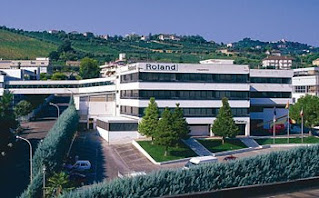












How does the Roland HP503 compare to the Kawai CN34, in terms of key action and sound?
Hi Tim:
Are the Roland ivory key still have wearing problems?
Thanks.
Roland did have some synthetic ivory material issues on their earlier HP models but I have not noticed any issues on these current models and have been told the issues were resolved…only time will tell. All good manufacturers from time to time have issues on new technology but it is obviously in their best interest to resolve the issues right away.
Hi Tim,
How can I buy the LX15 at Austin, TX. I looked around the web for roland dealer but could not find any.
Please contact me directly and I can help you with getting a Roland piano